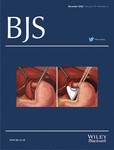-
Views
-
Cite
Cite
N W Pearce, S D Scott, S J Karran, Timing and method of reversal of Hartmann's procedure, British Journal of Surgery, Volume 79, Issue 8, August 1992, Pages 839–841, https://doi.org/10.1002/bjs.1800790844
Close - Share Icon Share
Abstract
The outcome of 145 patients undergoing Hartmann's resection between 1973 and 1989 has been reviewed. The mortality rate of the primary procedure was 8 per cent. Eighty patients proceeded to reanastomosis. Multifactorial analysis of these patients was undertaken to determine the risk involved. The interval between the primary and secondary procedures was found to be the most important factor. Six of 12 patients had clinical evidence of a leak when this interval was <3 months, compared with seven of 28 for 3–6 months, and none of 40 when the second operation was delayed for >6 months. All deaths (three patients) and clinical septicaemia (four) occurred in the two ‘early’ groups. All colovaginal fistulae (three patients) and strictures (three) were associated with stapled anastomoses. No association was found between the complication rate following reanastomosis and the initial pathology or grade of surgeon undertaking the secondary operation.





